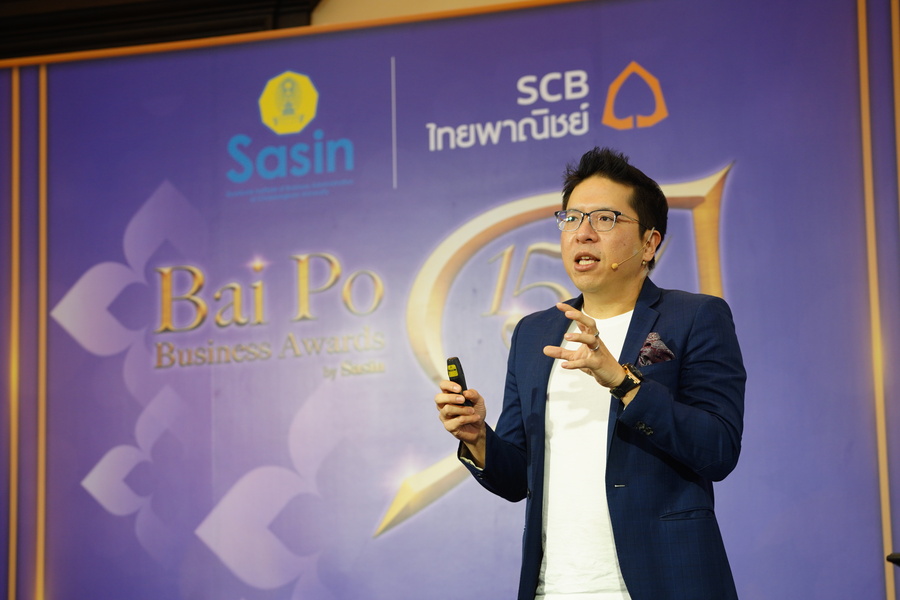I WANT
RELATED LINKS
I WANT
RELATED LINKS
RELATES LINKS
I WANT
RELATES LINKS
Services
Related Links

คำค้นหาที่แนะนำ
ผลการค้นหา "{{keyword}}" ไม่ปรากฎแต่อย่างใด
ข้อแนะนำในการค้นหา
- ตรวจสอบความถูกต้องของข้อความ
- ตรวจสอบภาษาที่ใช้ในการพิมพ์
- เปลี่ยนคำใหม่ กรณีไม่พบผลการค้นหา
Use and Management of Cookies
We use cookies and other similar technologies on our website to enhance your browsing experience. For more information, please visit our Cookies Notice.
- Personal Banking
- Stories & Tips
- BUSINESS MAKER
- Decoding Creative Power through Innovator Mindset
- Personal Banking
- ...
- Decoding Creative Power through Innovator Mindset
Decoding Creative Power through Innovator Mindset
11-03-2020
Creative innovation is a word that is often heard everywhere among working personals. At this time, many organizations wish for creative innovation to happen. So, what causes innovation? Capitals, technology, capable leaders, or talented individuals? Mr. Rawit Hanutsaha, CEO of Srichand United Dispensary, has shared his opinion about this on “The Innovator’s Mindset”.

Where does innovation exist?
Mr. Rawit said that, nowadays, many organizations establish an innovative team to specifically work on creativity. However, innovation is not a work of just one department and it is not something that can be forced to happen. This is because innovation is a process that gradually rooting in everyday working and it will not exist in a place that failure results in punishment as nobody would want to risk doing new things if they could get punished. In fact, organizations should be celebrating failure that happened as a result of novel creation because not fearing failure brings about creativity. Therefore, organizations will have to think of ways to manage failure and many of them turn to “a spectrum of the reason for failure” as a guideline to manage various cases of failure with different solutions.

Exploit and Explore, the duo cores of organizations
Mr. Rawit perceives creative innovation, which is responsible for the experimental team, as being messy and haphazard (Explore), unlike a business that is already stable and gaining profits (Exploit). Thus, the evaluation of Explore would be different from that of Exploit which efficiency can be tested. Explore then will be evaluated on Object & Key Results (OKR). The company nowadays should have these 2 forms of business as cores to drive the organizations.

Does the idea work?
According to the statistic, 72% of the new product launch is not successful. The reason is that majority of the companies are in a rush to launch the new product without knowing their consumers well. The question that has to be answered is whether the product is desired in the market or we just want to produce. If the answer is the latter, it is going to be risky as our needs do not match our customers’ needs. Therefore, we have to ensure that the idea will work before creating new products.

4 rules for creating innovation
The question earlier brings about these 4 rules of test that Mr. Rawit recommends as a checklist for entrepreneurs to create innovation.
- Reduce uncertainty: Before creating anything new, try to reduce uncertainty as much as possible. For example, if we want to know if the location is suitable for setting up a store, we can test on Facebook to see if there is a need for the product in the area.
- Start small: In an earlier stage, the more money we put in, the more chances that the failure will happen and prior business plan is not suitable to start an innovative business. The important thing is to have hypothesis testing. Let us use the case of Elon Musk as an example. Musk has an idea of manufacturing EV cars. He has to know if EV cars are wanted among his customers, so he conducts hypothesis testing by letting those who are interested register and pay $100 to reserve the cars. If there are more than 5000 people registering, the project can proceed to the next step. Musk then conducts hypothesis testing once again to confirm the result. He asks interested individuals to pay $5000 as a deposit for production. If there are more than 1000 people depositing, he will commence manufacturing and this leads to the launch of the first model of Tesla.

- Create space and culture of creativity: Money does not cause innovation, but organizational culture and innovator mindset does. Directors have a role to create space for failure in the organization to implement conducive environment for innovation. Importantly, directors are not the ones selecting ideas, but the ideas will select themselves from customers’ desire. Should directors like an idea more than another, the culture of creating innovation will be destroyed. This is because a culture that decisions depend on directors is an obstacle that makes innovation hardly happen. There must always be business planning and take failure to judge job improvement.
- Innovation is a skill that needs to continue to be learned and practiced. The power of the next generation organizations is not knowledge, as knowledge is solid and definite, but learning that is endless and can keep up with the speed of disruption.